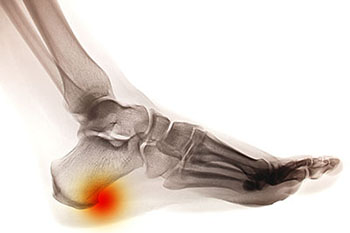
Signs that you may have a heel spur include pain felt in the heel region, swelling at the front of the heel, and inflammation. If the affected area also feels warm to the touch, you may be experiencing the symptoms of a heel spur. Heel spurs are extremely uncomfortable and can often lead to a great deal of pain if left untreated. They may develop due to several reasons esp lack of arch support/ wearing flat shoes, excess body weight, complications with arthritis and bruising of the heel due to chronic microtrauma or direct injury.
A heel spur takes the form of a bony-like growth. Heel spurs can be asymptomatic. Heel spurs can form due to a calcium deposit that extends between the heel bone and plantar fascia after reaction to stress of ligaments, intrinsic muscles or plantar fascia. They can grow up to half an inch in length; however, they may not be outwardly visible. Because heel spurs tend to grow, increasing the overall discomfort felt, it’s important that you seek professional help as soon as pain is experienced for early detection. Posterior heel spurs can also form between the Achilles tendon and the heel bone.
For a proper diagnosis and recommendations for treatment, we suggest you consult with a podiatrist about any heel pain concerns.



